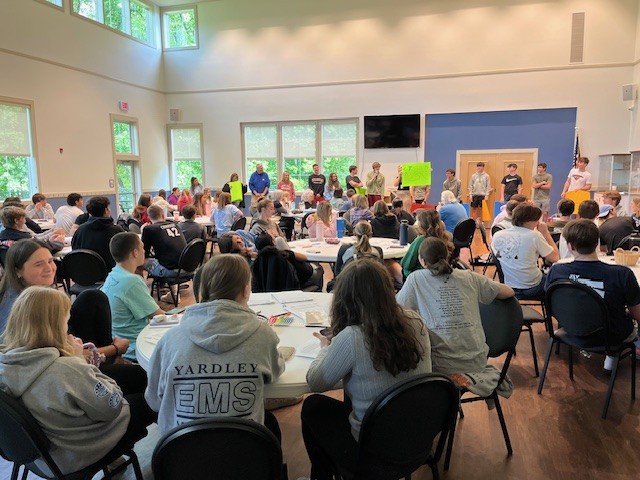Investing in the Future: 5 Ways to Strengthen Seasonal Staff Development
In this blog, Monica Tierney, Director of Parks and Recreation for Lower Makefield Township, describes the importance of training the next generation of workers in the field of Parks and Recreation. She highlights how the seasonal employees hired each summer play a crucial role not just in supporting operations, but in shaping the future workforce. Monica reflects on the need to rethink training methods, moving away from outdated approaches and focusing on strategies that are engaging, relevant, and adaptable to today’s workforce. Through these changes, she aims to develop young professionals equipped with skills for their future careers.

To me the best part of working in Parks and Recreation is that no two days are ever the same. One moment, you’re leading a frog walk or organizing a community event, and the next, you’re designing a park that will serve generations to come. This variety is what makes our work exciting, but beyond the programs, the parks, and the planning, there’s another critical responsibility—training the next generation of our workforce.
Every summer, Lower Makefield Township hires around 160 seasonal employees to support our pool, summer camp, and field maintenance operations. These employees, ranging in age from 14 to 65+, don’t just fill temporary roles—they represent the future of our profession and the workforce as a whole. Years ago, we made a conscious decision to prioritize training—not just to ensure smooth operations, but to give our staff an experience that prepares them for what’s next, whether in Parks and Recreation or any other field.
As Parks and Rec professionals, we know our teams’ strength directly impacts the success of what we offer to our communities. So how do we make sure our training is effective, relevant, and engaging for today’s workforce? It starts with rethinking how we train.
A Wake-Up Call in Training
Last year, I had a conversation with our Pool Assistant Managers that completely changed my perspective on training. I had noticed they weren’t stepping into their leadership roles, there was too much downtime, and tasks weren’t getting done. Frustrated, I asked why they weren’t taking the initiative.
One of them stopped me mid-sentence and said, “I don’t know what I should be doing.”
That response caught me off guard. We provided extensive training each year, assuming that every new group of employees understood our expectations. But in that moment, it became clear—our training had become stagnant. Training isn’t just a one-time event at the start of the season; it’s an ongoing process that must evolve alongside workplace demands, shifting expectations, and generational changes.
How We’re Adapting Training for the Future
Since that realization, we’ve been rethinking our entire approach. Instead of relying on the same methods year after year, we’re developing a program that’s more engaging, relevant, and effective for today’s workforce. Here’s what we’ve learned:
1. Make Training Generationally Relevant
Today’s younger workforce learns differently than previous generations. They’re used to quick, engaging content—so we’re working on ways to make training as captivating as TikTok, breaking down complex topics into bite-sized, digestible pieces.
2. Bring in Outside Experts
Rather than relying solely on in-house training, we’re incorporating industry professionals—people who typically give keynote speeches—to help develop our leadership team. Hearing from experts beyond their direct supervisors adds credibility and fresh perspective.
3. Prioritize Hands-On Learning
Instead of just telling employees what to do, we focus on interactive training that lets them practice skills in real time. This hands-on approach builds confidence and improves knowledge retention far more than passive learning.
4. Clarify Expectations Early and Often
One of the biggest takeaways from my conversation with our Assistant Managers? Assumptions don’t work. We’re now setting clear expectations from day one and reinforcing them throughout the season so that employees understand their roles and responsibilities.
5. Continuously Evolve and Adapt
The biggest lesson of all? Training should never be static. What worked five years ago—or even last summer—might not work today. We must be flexible, constantly evaluating and improving our approach to meet the needs of today’s workforce.
The Future of Workforce Training
Training the next generation is one of the most important things we do—not just for the success of our programs but for the future of our communities. We can’t afford to wing it or rely on outdated methods. The workforce is changing, and so must we.
By modernizing our approach, embracing new strategies, and staying open to change, we’re not just building a strong seasonal workforce, we’re shaping young professionals who will carry these skills into their future careers.
It’s a big job, but it’s one we’re proud to take on.
